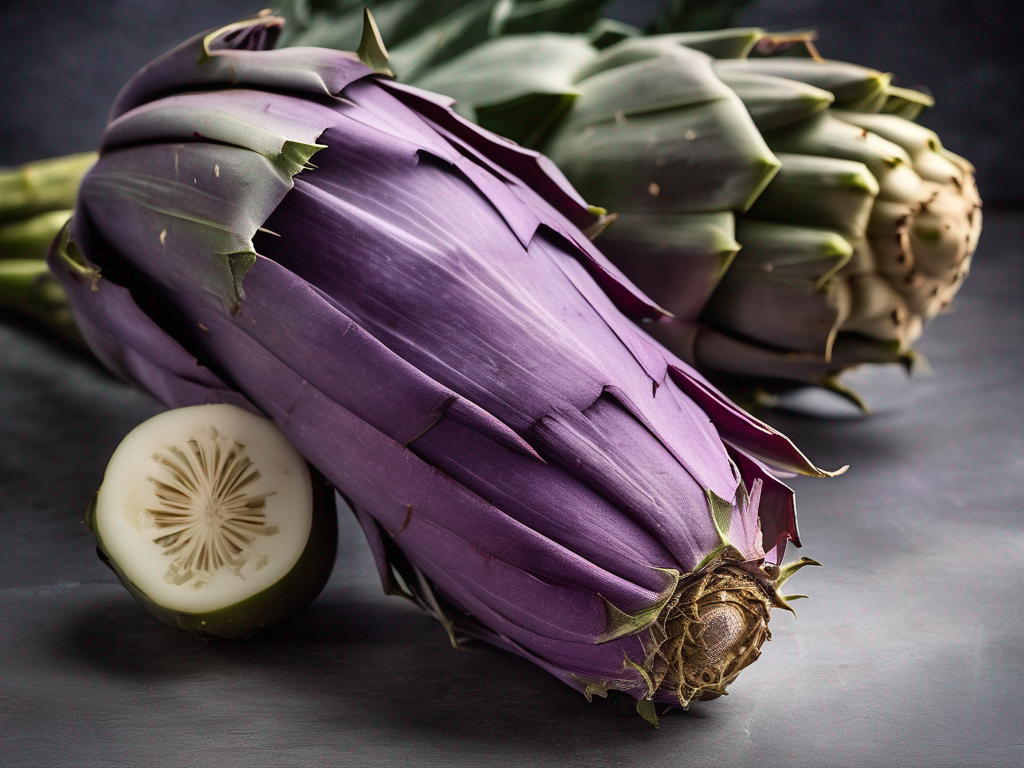
Preserving Cardoon for Longer Freshness: Effective Methods and Tips
Get Your Free Food Safety Cheat Sheet
30 most common foods with instant answers. Print it and stick it on your fridge—completely free!
Preserving Cardoon for Longer Freshness: Effective Methods and Tips
Cardoon, a close relative of the artichoke, is a versatile and delicious vegetable that is prized for its unique flavor and health benefits. However, like many fresh produce items, cardoon can spoil quickly if not stored properly. In this comprehensive guide, we will explore effective methods for preserving cardoon to extend its freshness and maximize its shelf life. (Cardoon)
Understanding Cardoon
Before delving into preservation methods, it's important to understand what cardoon is and why it's worth preserving. Cardoon is a perennial plant that is cultivated for its edible stalks and flower buds. Rich in fiber, vitamins, and antioxidants, cardoon offers numerous health benefits, including improved digestion and immune support. Its distinct flavor, which is often described as a cross between artichoke and celery, makes it a popular ingredient in Mediterranean and Italian cuisine.
When purchasing cardoon, look for stalks that are firm, with no signs of wilting or browning. Fresh cardoon should have a vibrant green color and a crisp texture. To enjoy cardoon at its best, proper storage and preservation techniques are essential.
Methods for Preserving Cardoon
1. Refrigeration
- Trim the ends of the cardoon stalks.
- Place the stalks in a container filled with water.
- Cover the container with a plastic bag to retain moisture.
- Store in the refrigerator crisper drawer.
2. Blanching and Freezing
- Trim and peel the cardoon stalks.
- Cut them into desired sizes.
- Blanch the stalks in boiling water for a few minutes.
- Plunge them into an ice bath to stop the cooking process.
- Drain and pat dry before freezing in airtight containers or freezer bags.
3. Pickling
- Prepare a brine solution using vinegar, water, salt, and spices.
- Cut the cardoon stalks into small pieces or strips.
- Pack the cardoon into sterilized jars and cover with the brine.
- Seal the jars and store in a cool, dark place.
4. Dehydrating
- Slice the cardoon stalks thinly.
- Arrange them on a dehydrator tray in a single layer.
- Dehydrate at a low temperature until completely dry.
- Store the dehydrated cardoon in an airtight container.
Safety Tips for Preserving Cardoon
- Always wash and sanitize your hands, utensils, and work surfaces before handling cardoon.
- Use clean and sanitized containers for storage to prevent contamination.
- Follow proper canning and pickling procedures to ensure food safety.
- Label and date all preserved cardoon to track freshness and storage time.
- Discard any preserved cardoon that shows signs of spoilage, such as mold or off odors.
Conclusion
Preserving cardoon allows you to enjoy this flavorful and nutritious vegetable long after the harvest season has ended. Whether you choose to refrigerate, freeze, pickle, or dehydrate your cardoon, following proper storage and preservation techniques is key to maintaining its quality and flavor. Experiment with different preservation methods to find the one that best suits your preferences and culinary needs. By taking the time to preserve your cardoon properly, you can savor its unique taste and health benefits throughout the year.
Remember, cardoon is a versatile ingredient that can elevate a wide range of dishes, from soups and stews to salads and gratins. With the right preservation methods, you can enjoy the goodness of cardoon in your favorite recipes whenever the craving strikes. (Cardoon)
Related Posts
Here are some other articles you might find helpful:
Authoritative Food Safety References
These agencies and university labs inform every tip and health precaution we publish.
USDA FoodKeeper – Cold Storage Guidelines
Official refrigerator, freezer, and pantry timelines maintained by the U.S. Department of Agriculture.
Visit USDA FoodKeeperFDA Produce Safety Rule & Grower Guidance
Field-to-fridge handling practices that prevent contamination of fruits, vegetables, and leafy greens.
Visit FDA Produce SafetyCDC Foodborne Illness Prevention Hub
Surveillance-backed guidance on pathogens, symptoms, and steps to reduce foodborne illness risk.
Visit CDC Food SafetyUC Davis Postharvest Technology Center
University research detailing optimal storage atmospheres for produce after harvest.
Visit UC Davis PostharvestPenn State Extension – Home Food Preservation & Safety
Peer-reviewed extension bulletins on safe canning, chilling, and reheating practices.
Visit Penn State ExtensionGet Your Free Food Safety Cheat Sheet
30 most common foods with instant answers. Print it and stick it on your fridge—completely free! Want more? Upgrade to the complete guide with 70+ foods.
Scan your food directly and get instant safety info using our AI-powered camera feature.